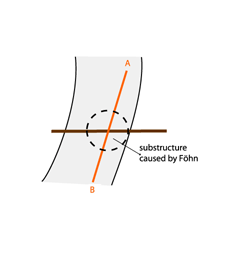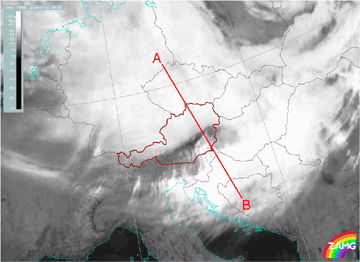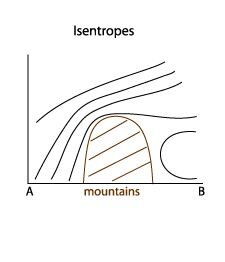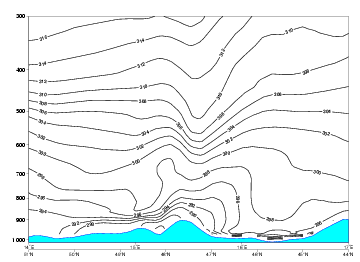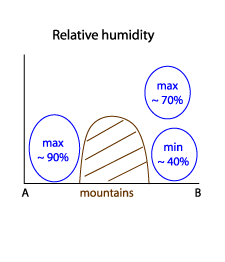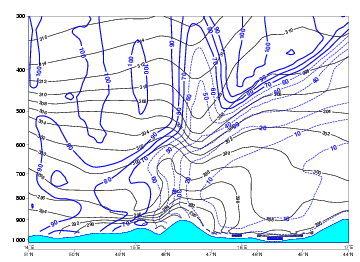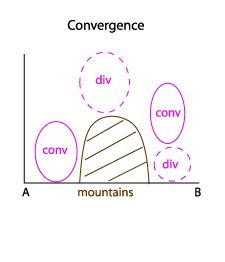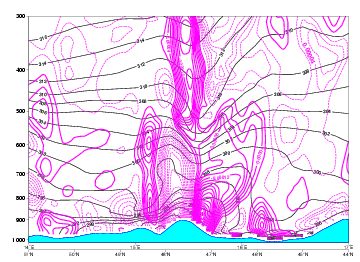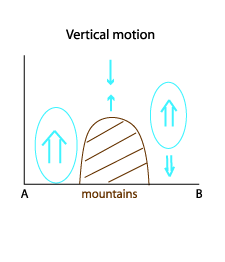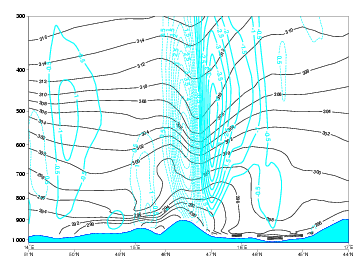Typical Appearance In Vertical Cross Sections
The typical appearance in vertical cross sections is somewhat false, because of the fact that the effect of mountains is not treated realistically within cross sections, neither from radio soundings nor from numerical models. Radio Sonde stations have too big a spatial resolution while numerical models usually do not contain the fine structure and real height of mountainous areas. Nevertheless some interesting features can be derived.
- Equivalent potential temperature:
Moist adiabatic isentropes show a zone of high gradients on the windward side crossing the mountains and a different air mass below this zone on the lee side; this can be seen much better in vertical cross sections from radio sounding stations. - Relative humidity:
Reflects the differing cloud situation on both sides of the mountains: a maximum of relative humidity is located on the windward side from the surface up to the mountain tops; a secondary zone of high humidity can be found at high levels on the lee side representing the high Lee Cloud; below this zone it is much drier or even very dry. - Convergence:
There is convergence on the windward side from the surface up to middle levels and convergence on the lee side from middle to high levels; divergence occurs above the mountains as well as in the low layer on the lee side. - Vertical motion:
Upward motion is associated with the convergence areas and, therefore, strong upward motion in a thick layer can be found on the windward side and also on the lee side but at middle to high levels. The lowest layers on the lee side show sinking.
The example below, used to demonstrate general Foehn dynamics, is from the Alpine region. Therefore the following relation between vertical cross section, frontal cloud and mountains exists.
|
|
27 January 2008/00.00 UTC - Meteosat 9 IR10.8 image
|
Equivalent potential temperature: vertical cross sections from radiosonde stations compared with the output from numerical models
|
|
27 January 2008/00.00 UTC - Vertical cross section; black: isentropes (ThetaE)
|
Relative humidity: vertical cross section from radio sounding stations
|
|
27 January 2008/00.00 UTC - Vertical cross section; blue: relative humidity, black: isentropes (ThetaE)
|
Convergence: vertical cross sections from numerical model
|
|
27 January 2008/00.00 UTC - Vertical cross section; magenta: divergence, black: isentropes (ThetaE)
|
Vertical motion: vertical cross sections from numerical model
|
|
27 January 2008/00.00 UTC - Vertical cross section; cyan: vertical motion, black: isentropes (ThetaE)
|
